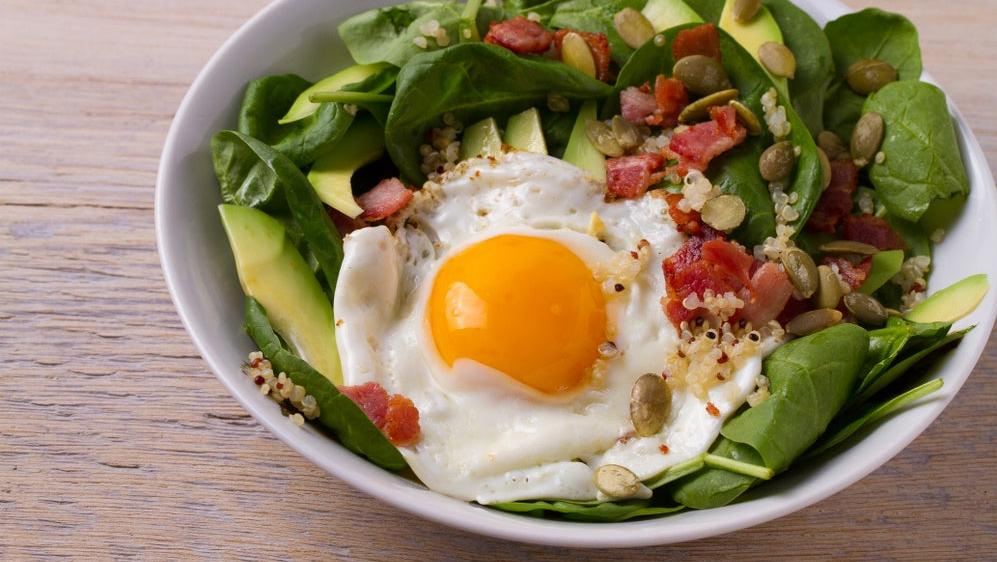A Casual Guide To Grocery Store Greens
A primer on who’s who in the produce section, for those looking to add more vegetables to their diet.
If, like me, you were very scared of eating your greens as a child but are trying not to die of vitamin deficiency as a grown-up, you might still be a little lost in the produce aisle. A lot of this stuff looks kind of the same, right? Never fear, for I have created a handy guide explaining the greens you're most likely to encounter in the section of the produce department that gets misted on the reg.
Spinach
Has iron in it! Beyond making salads with it, blend it in with your fruit smoothies, feature it in chicken dishes, or hide it in baked goods. You can cook it until it wilts and put it in soups, pastas, and other dishes, or cream it and serve it next to the Thanksgiving turkey. Equally useful both raw and cooked.
Kale
This one is the one that will keep me alive forever, right? There are lots of varieties of kale and, if you cook it wrong, it tastes very bitter, like how I feel about all the press that this silly leaf has gotten. However, if you cook it with bacon, the right amount of salt, or some lemon and garlic, it's really quite good. It's often used raw in salads, but if you go that route, you have to shred it, otherwise it's too much to gnaw through. It's also a popular addition to a green smoothie and you can air-fry it into crispy seasoned chips. For best results, massage it first.
Collard Greens
Collard greens are a delicious and important part of Black American cuisine. They're a cousin to kale, so if you prefer collard greens they are pretty much interchangeable within recipes, offering a similar flavor and texture, depending on how they're prepared. I should try growing them in my backyard alongside my kale, because that would add a fun variety to the foods my kids won't try.
Swiss Chard
I've cooked Swiss chard very similarly to kale, to great results. But this leafy green features a stalk with various rainbow stripes of color, which is fun. It's pretty bitter if you don't finesse it, but makes a great addition to a homemade odds-and-ends pesto.
Cabbage
Poor people in children's stories often eat a thin soup made of cabbage, but it deserves a better rep than that. Green cabbage is one of the most reasonably priced, versatile, and long-lasting greens you can buy at the grocery store. Very stinky when cooked or farted, but worth the risk. Works great with meat, and can function as a delicious salad when raw. Multiple delicious salads, in fact.
Bok Choy
Also known as Chinese white cabbage. While you can eat it raw, it's usually featured in Asian dishes cooked; it will wilt down in a dish, giving everything a yummy, cabbage-like flavor somehow much better than actual cabbage (don't tell my dead Irish ancestors).
Lettuce
Sounds easy, right? Salad = lettuce. But there are so, so many different varieties of lettuce. Take a deep breath. We can do this. GRAND FINALE:
- Arugula: A little spicy. Peppery. Great with a poached egg. This one's the Ginger Spice of the group.
- Romaine: The one I get when I want to make a basic salad but not quite so basic as one made with iceberg. Sporty Spice.
- Radicchio: Purple, bitter lettuce, served with Parmesan as a salad at fancy restaurants. An easy base for a "cheffy" salad at home. Posh Spice.
- Endive: Sometimes called escarole. See radicchio, but take out the pretty color. Tame its bitterness by pairing it with citrus. Scary Spice?
- Iceberg: Has the cronch factor, is not considered classy, unless you serve it as a wedge salad. Good on hamburgers. Gentle on everyone's palate. Baby Spice.
- Butter lettuce: Also known as butterhead, Boston, or bibb. Looks like iceberg, but less crunchy and not quite as watery. Can go on sandwiches but also makes a great vessel for Asian lettuce wraps. Try a BLT salad. I have run out of Spice Girls, so this one is David Beckham.
